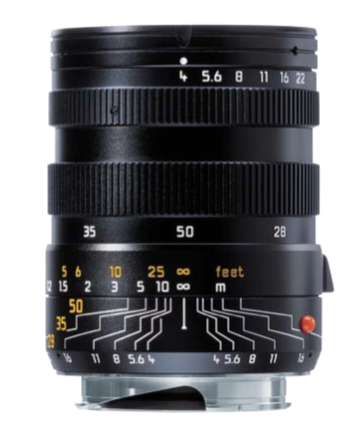Today’s visit to Red Dot Cameras was not just social in nature. Francis Qureshi had called during the week from the Old Street dealership to give the heads up that my Tri-Elmar MATE (Medium Angle Tri-Elmar) was back from the six-bit coding man. The MATE is now discontinued, although the wide-angle WATE version (Wide Angle Tri-Elmar) with its 16-18-21mm focal lengths is still current and can be purchased for £3,900.

Following my acquisition of the classic MATE (the later 46mm-thread version) from David Stephens of the Leica Store Manchester at the Photographica camera fair in May, I quickly decided that the lack of six-bit coding was a major handicap. To be certain of best results it was necessary to enter the menu and change the lens focal length before switching from 28 to 35 or 50mm. I’m so used to dealing with modern six-bit lenses that this was all too much. Something had to be done.
I’d considered sending the lens back to Wetzlar but the waiting time was likely to be long. So in stepped Ivor Cooper with an offer to send it to his six-bit man based in the UK. The whole process took less than a month and I now have my mint-condition Tri-Elmar back for use.
The Leica M system doesn’t do zooms. It does fixed focal lengths, just as the gods intended. But the Tri-Elmar design, both MATE and WATE, was an oddity. Here we have three lenses in one. They aren’t proper zooms, simply offering a stepped progression between three discrete focal lengths. I like stepped zooms, as on the D-Lux which I tested last week, and prefer them to infinitely variable twiddling. I like to know where I am. In some ways they were too good, certainly very complex and expensive to make. Rumour has it that the lovely MATE bit the dust simply because it was too expensive to continue in production.
The two Tri-Elmars offer a fixed f/4 aperture for the three focal lengths, similar to many modern zooms such as the 24-70mm Vario-Tessar FE lens for the Sony A7 range. The MATE, which is a great travel companion for the Leica M, is pin sharp and so easy to use (provided you have it six-bit coded so the camera and metadata knows where you are). I’m looking forward to using it for travel where it undoubtedly excels. Not only do you have three lenses in one small package, there is no need to keep changing lenses and risk getting dust on the sensor. The MATE, in particular, is also a great lens for street photography, the WATE less so.
It hasn’t escaped my notice that the three focal lengths of 28, 35 and 50 are precisely the choice Leica offers on the new Q camera (tested here). So I intend to do some back-to-back comparisons, perhaps a little unfair to the Q, in the next few days and I will be posting the results.
Incidentally, here’s a tip if you own a MATE. Wed it to an APS-C body such as the Leica T or Fuji X-T1 and you get a rather useful stepped zoom range of 42-52-75mm. In fact, with this lens and two bodies, one full-frame, one APS-C, you have five different focal lengths to choose from, all the way from 28mm to 75mm.

I love reading your blog. One day I would like a Leica. My father was a Leica man from early days when we lived in Shanghai. I inherited his old much used / loved camera. I sold it, damaged lens & all, for £80 when I left England.
Hebe, thanks, glad you enjoy. That Leica from the 30s would probably be worth £250 or £300 now, unless it is some sort of rare edition in which case it could be more. There are many available. I get the impression that almost every Leica ever made is still alive and kicking somewhere.